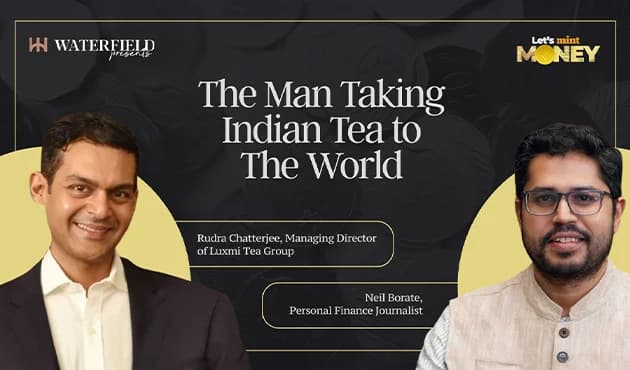Why India’s growing tycoonery will need the skills of family offices?
article • Investment Management

Soumya Rajan
2022-02-11 | 10 mins
At the same time, there is a noticeable trend in household savings moving towards financial assets, different from earlier years when physical assets were preferred by Wealth Creators. Investment allocations and strategies are also changing, with more promoters creating separate pools of capital for their legacies as opposed to ploughing back all their wealth into their operating businesses.
India has seen unprecedented growth in liquid wealth. It today accounts for US$12.8 trillion or 3% of Global Wealth. India’s Ultra High Networth Individuals (UHNWIs), with assets over $30 million, is expected to grow 63 per cent over the next five years. At present, India is home to around 7,000 UHNW households and 113 billionaires. The Indian billionaires club is expected to increase by 43 per cent to 162 by 2025. By 2023, only 3 countries in the world – the United States, China and Russia will have more billionaires than India, so there is unprecedented growth in this segment.
Succession and Exits, which create liquidity events for Families
Family Businesses typically go through three phases. The “Initial stage” or the “Founders Stage” wherein all dimensions of the family, ownership and business are concentrated in one family or groups of families or the individual founder. The second stage is where the company grows and transitions ownership to the next generation which is also called “Siblings Partnership”. In this stage, there is now a distinction between the family, ownership and business. In the third stage, the business has matured and you have the “Cousin’s Confederation”.
Stage Two and Stage Three is when families feel the need to set up a Family Office that provides the necessary governance framework to manage family dynamics and to trigger the conversations on ownership vs management, exits and possible liquidity events.
An unfortunate drawback of wealth creation is its ability to cause conflict – and in the context of succession – family conflict. By some accounts, India has the highest incidence of family feuds. 40 per cent of the global wealthy have direct experience of their family fortune leading to disputes, while in India an estimated 60 per cent of the rich have seen relationships deteriorate because of feuds over money. Family Office structures can therefore be an effective tool to manage inter-generational wealth and complexity in succession.
What has been a particularly gratifying trend for me personally, has been to see more women participate in the Family Office discussions, be they as Family Principals, members of the Family Council or leading discussions on investments within their Family Office; and this bodes well for the future as conversations are more inclusive and collaborative.
Family Offices are an important source of new capital
The Venture Capital and Private Equity ecosystem in India is maturing and generating liquidity events for promoters and entrepreneurs. In the past ten years, India has received US$198bn through PE/VC funding; over 50 per cent of this was in the past three years. A part of this liquidity is finding its way to private markets investments, into funds or direct deals, through their family offices.
Three critical forces are driving this emerging trend – the first is that family offices typically represent significant pools of wealth seeking investment return; secondly, as demand for integrated wealth management services increases, the rapid proliferation of the family office model has deepened the sector’s resources; and finally, family offices have long-term investment horizons that allows for “patient capital” investments.
With many aspects of their long-term planning tied to their investment portfolios, most families find that family offices represent the ideal structure for implementing a cohesive wealth management strategy. Family offices also share many characteristics with pension fund investors, and these similarities are actually serving to reinforce the trend toward the institutionalization of the industry.
Rise of the Family Office
Over the past 20 years there has been a global proliferation of Family Offices, with a significant rise in the numbers over the past 10 years subsequent to the 2008 Global Financial Crisis. This was driven primarily because several wealthy families incurred substantial losses on their investment portfolios that were being managed by Banks and larger Financial Institutions. These clients sought to have greater control over their investments and a lower cost of investing. This coupled with growing complexity, globalisation and regulation has resulted in the rise of the Family Office.
It is estimated that there are between 6,500 and 10,500 Family Offices worldwide that manage ~US$8 trillion in assets. This is larger than the entire global hedge fund industry. It is estimated that India is home to 1% of these family offices.
Family offices are today arguably the fastest growing investment vehicles in the world, as families with substantial wealth are increasingly seeing the virtue of setting up family offices. This space therefore needs much greater understanding from both wealth practitioners and clients.
Demystifying family offices
Working with many business families over the past 10 years, I have come to realise that a Family Office means different things to different people. Some families view them as Private Investment Offices, while others see it as a means of staying connected with family members spread across the globe, who are bonded by blood and through the ownership of their family business. But, at the heart of all the discussions, a Family Office captures the purpose of their wealth and legacy that families seek as a generational outcome; with the ability to marry both the material wealth creation and wealth preservation goals of a family with the intangible safe harbour of good communication, good governance, filial bonds and a seamless succession of wealth.
So what is the more practical definition a Family Office?
I like to define a Family Office as an ‘ecosystem’ that a family builds around itself to help the family members get better organized, to help them manage their assets and to enable them to enjoy their lifestyles to the fullest. Depending on the family’s needs, this could encompass investing the financial portfolio, leading business transactions, tending to philanthropic interests or managing multiple households.
Family Offices are either defined as Single Family Offices or Multi-Family Offices. A Single Family Office caters to just one family. Multi-family offices, on the other hand, provide the same services as a Single Family Office, but instead serve multiple, unrelated, families.
Not every wealthy family seeks to set up their own Single Family Office; and MFOs help families avail of similar services to having their own Single Family Office, without having to worry about the administrative issues related to running a family office. The key benefits of a Multi-Family Office is the access to high calibre advice from a team of specialists, whose interests are aligned with the family, yet at the same time the families benefit from the economies of scale and a sharing of costs. I have seen a growing trend that families set up a Single Family Office, when they have completely exited from a business; but those who are still involved in operating businesses tend to work through a hybrid model with a Multi-Family Office, where the latter provides access to specialised advice, but the more sensitive areas like accounting and routine administrative matters are looked after by skeletal in-house staff. Ultimately, the decision to set up a Family Office is very a personal one and the factors that influence the decision include the overall corpus of assets to be managed, access to talent and the costs a family is ready to incur to set up a Family Office.
Origins of a Family Office
The roots of Family Offices can be traced to a period between the 15th and 18th century where wealth was managed for princely families, the first being the Medici family, a powerful and influential Florentine family in Italy. The family produced four popes, numerous rulers of Florence, two Queens of France and a Queen of the British Empire. They were early venture capitalists and claimed to have funded the invention of the piano and introduced the first model of a holding company structure, that so many family offices use today.
The modern day concept of the Family Office, though, emerged only in the 19th century. In 1838, the family of financier and art collector John Pierpont Morgan founded the House of Morgan to manage the family assets. This subsequently morphed, through multiple mergers and acquisitions, to what we know today as JP Morgan & Chase, the fifth largest bank in the world and the largest bank in the United States, managing assets of approx. US$3.7 trillion. In 1882, the Rockefellers founded their family office which is also still in existence today and manages assets globally for a wide range of families, individuals and institutions.
Philanthropy and Socially Responsible Investing
Globally, families with wealth face unique challenges. I have seen that philanthropy provides a great bridge to discuss a family’s values, goals and ultimate legacy. Parents are often hesitant to discuss inheritance and money with their children, because they are worried that the knowledge of the family’s wealth at too young an age may demotivate their children or inhibit them from leading more productive lives. Most Family Offices have a philanthropy arm or a Family Foundation. This is often the first place where the NextGen also learn about the basic principles of investment management and asset allocation, where teenage children see their parents manage the foundation’s investment corpus for doing social good. There is also the nascent but growing trend amongst family offices to integrate ESG or Environment, Social and Governance metrics in their investment decisions. Indian Family Offices were early adopters of negative screening of certain sectors for their investments, for example, alcohol, tobacco or children labour, often based on a family’s values. This has now grown to a positive bias towards socially responsible investing and the NextGen are leading discussions on how a family’s investment interests can be aligned with their philanthropic and social impact values. Going forward, the lines between growing wealth and doing good with the family’s wealth are unlikely to be two separate agendas.
Globalisation of Assets
We are seeing a greater trend in the globalisation of assets. While there continues to be restrictions and capital controls, India has a 17.5 million strong NRI diaspora. Most HNI families have at least one family member residing overseas and sadly this has got accelerated during the pandemic with more families seeking an alternate jurisdiction to their primary residency in India. Consequently, Family Offices are being set-up in multiple jurisdictions and this allows families to access wider global market investment opportunities. My prediction is that this along with possible capital account convertibility at some point in the future, will see the emergence of the Global Indian Family Office over the next 10 years.
In conclusion, having a Family Office or working with a Family Office is a deeply personal requirement. It can provide tremendous peace of mind and support to all family members. Where a family’s financial needs are complicated, a family office provides an integrated service model that accounts for everything financial and lifestyle related in one place. Very often when families choose to work with multiple professionals, important items can fall through the proverbial “cracks” and the oversight that a family office can provide, greatly reduces omissions created by individual financial silos. A family office is also not for every family, but for those with significant assets, complicated financial lives and a desire to make the mundane, as well as the complex, a bit smoother, a family office can be an ideal solution.














